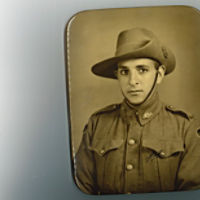As World War One ended, more than 150,000 Australians serving overseas – on the Western Front and in the Middle East – needed to be brought home.
But where would they live when they returned? Few houses had been built during the war years to cope with the country’s growing population. Labour shortages caused by the massive enlistment of men in the armed forces, rising house prices and rents, and increased costs and limited supply of building materials combined to create an accommodation crisis.
The many thousands of soldiers, sailors, airmen and ancillary staff either didn’t have a physical place to live or resided in sub-standard dwellings. This clashed with the rallying cry of the time to provide “homes fit for heroes”: those who had served and the widows of those men who would never return.
The fledging federal government and state administrations were increasingly aware of the significant challenges this issue presented. The passing of the Commonwealth Government’s War Services Homes Act in December 1918, and the creation of the War Services Homes Commission the following March, brought a whole-of-Australia approach to the problem.
And central to these initiatives – as it had been to funding the war and a host of associated economic measures – was the Commonwealth Bank of Australia.







